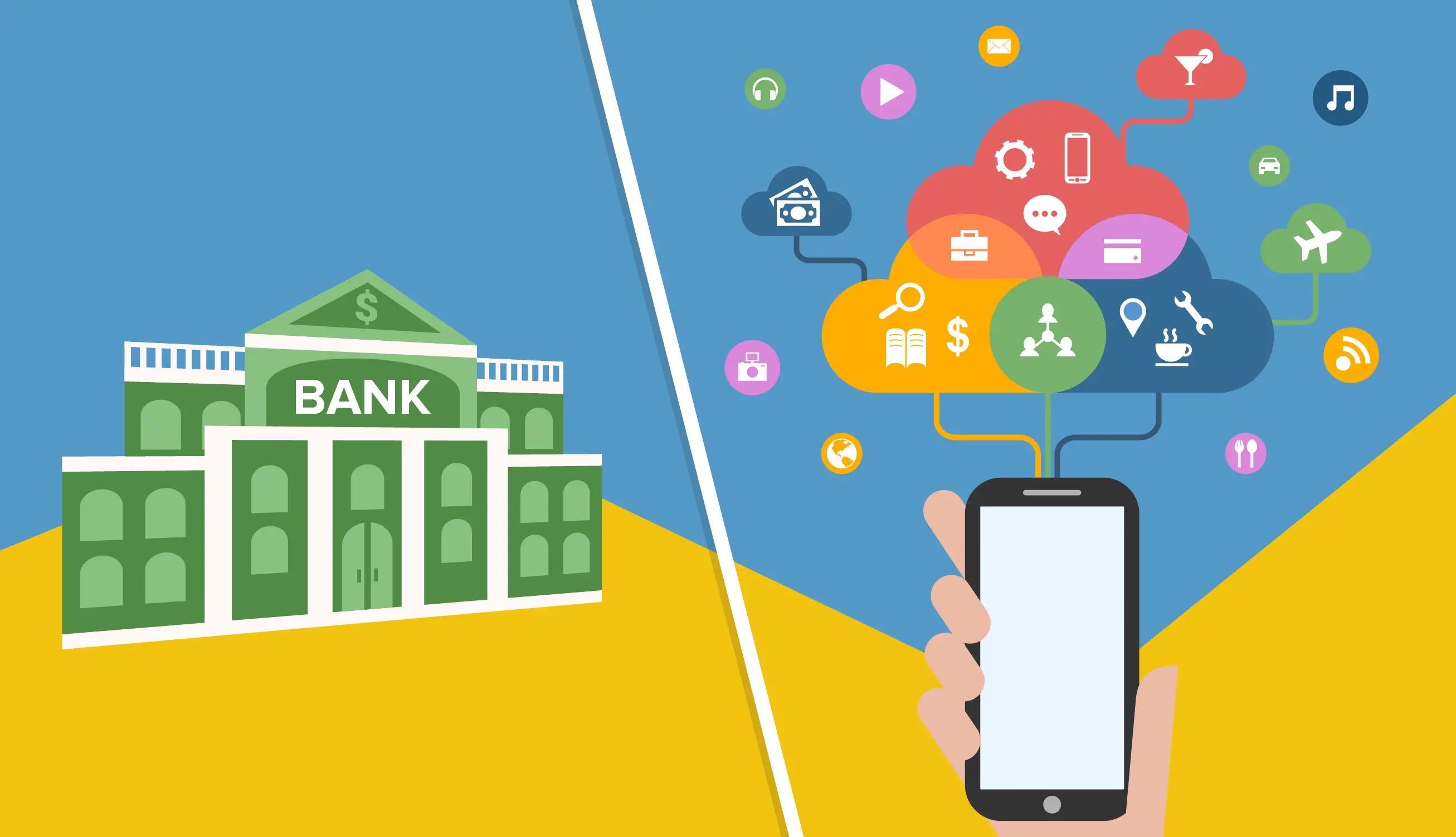
Fintech is the innovation that seems to break down the barrier of the future in the finance field. Lionel Barber, Financial Times editor, said that “Nobody wants to be in banking, everyone wants to be in fintech”. Many call Fintech the Fourth Industrial Revolution, which emerged from the modern entrepreneur’s desire to adapt to his new needs, and experts describe it as the missing link between financial traditionalism and the finances of the future. The complexity and innovation of Fintech are the main ingredients that the citizen of the future needs, a mix between the Internet of Things and artificial intelligence and a sort of riot against the outdated, restricting finance systems that many had already resigned to using. Fintech’s rise to power forced traditional systems to adapt and offer new ingenious solutions to customers and startups. These solutions are meant to streamline their work and facilitate interaction between those who activate in the finance field. But what exactly is Fintech and how can we expect it to change the future of banking as we know it?
First, a bit of history
In general, banks and the finance field as a whole have been relatively quick to adopt new technologies and upgrade the services they provided to their clients. However, all of this changed in 2008, when the economic crisis struck and many institutions had to close down or dramatically change their portfolios to adapt to the new, stringent requirements of the market. They had to comply with new regulations, pay fines, impose stricter loan criteria to survive, being under constant stress. Adapting to those hard times favored their survival, but it did not drive innovation.
In the same period, technology was having an unprecedented boom. Lifechanging apps, services and products were released, such as the iPhone, booking apps, Airbnb, ridesharing apps, chat apps, cryptocurrencies or mobile payment systems. PayPal’s popularity grew and people had smarter options for everyday necessities. Mostly made up of millennials, that generation favored change, and by the time banks got back on their feet, there was already a considerable gap between the technologies offered by traditional banks and the rising standards of modern customers. They demanded more flexibility, convenience and a streamlined user experience – and Fintech was there to meet these standards.
Fintech innovations

Fintech (Financial Technology) is the ensemble of innovations and technologies used in modern finance services. In the past, the term was used to describe the back-end of financial institutions, but as of 2008 its meaning expanded to any innovation happening in this sector. Fintech is more and more widespread and it is estimated that 3 out of 10 clients (personal or commercial) use it, knowingly or unknowingly. Fintech changes the way in which financial services are designed and delivered, catering to the needs of the modern customer.
Thanks to technology, people everywhere are used to superior provider interactions. For evidence of this, just check out the latest chime review. They want everything to be fast, streamlined, convenient, accessible and diverse. By comparison, traditional financial services sound obsolete and limiting, which is why Fintech introduced innovations such as:
- The use of cryptocurrency such as Bitcoin
- Intelligent buyer-seller contracts executed via blockchain
- Open banking
- The implementation of AI in apps that helps customers understand their financial behavior and give financial advice
- InsurTech
- Robo-advisors which provide reliable investment advice at a fraction of the cost
- Cybersecurity innovations that protect customers’ data and funds
- Solutions for unbanked or underbanked individuals and companies who cannot obtain financial aid from banks
Why are Fintech companies needed?

Fintech has long passed the stage where it was considered a trend. In 2008, it received $100 million in investments, while in 2016 it received $17.4 billion. These numbers are expected to grow even more, proving that Fintech is here to stay precisely because it is needed.
During the economic crisis, financial institutions had to operate within their comfort zone, limiting their services. At the same time, customers, pushed by technology, wanted to innovate, to manage their income and transactions in a more effective manner. Companies such as Contis started to offer alternative banking and payment solutions to meet this need. Their services are in line with existing trends and facilitate customers’ access to their own finances.
The feedback given to Fintech companies is encouraging to say the least; according to the latest research, more than 40% of them are willing to try out services such as mobile payments through secured apps, payments with contactless cards or sending money just by using the recipient’s email address. But, more than anything, Fintech is needed because it offers an invaluable opportunity to clients that traditional banks reject, such as people with low-credit scores or small startup businesses.
Categories of Fintech users
According to the EY FinTech Adoption Index 2017, the global Fintech adoption is currently at 33%, compared to 16% in 2015. The highest adoption rate is in China (69%), followed by India, UK, Brazil and Australia. For the following years, experts forecast an adoption rate of 52%, as markets like South Africa, Mexico and Singapore have expressed intent in using Fintech. According to the same index, the most used Fintech services are:
- Money transfer and payments – 50%. E.g.: paying for products and services with cryptocurrency, using non-banks to transfer funds, paying with mobile phones
- Insurance – 24%. E.g.: insurance comparison sites, insurance rate calculators
- Savings and investments – 20%. E.g.: crowdfunding platforms, investment management solutions, online investment advice
- Borrowing – 10%. E.g.: short-term loans alternatives, P2P loan platforms
- Financial planning – 10%. E.g.: budget planners
As for Fintech users, they can be divided in four categories:
- Business-to-business for banks
- Business-to-business for banks clients
- Business-to-client for small businesses
- Business-to-client for consumers
How will Fintech change traditional banking?

The evolution of Fintech had a major impact on traditional banks. Faced with a huge competitor, banks were forced to adapt and keep up. Citibank says that Fintech will reduce jobs in the banking sector by at least 30%, as users will switch from traditional banks to Fintech services, but, as a whole, banks remain trusted institutions and Fintech could also create new jobs as well. Many banks have responded to the challenge by developing their own services (apps that allow users to send money instantly to clients from the same bank, online loan calculators etc.), or even by investing and collaborating with Fintech companies.
Currently, financial analysists do not foresee a fall of traditional banking as we know it, but they do talk about the massive impact that Fintech had and continues to have in this field. Banks used to be untouchable institutions that faced no competition and that provided little to no variety in their portfolios. Now, they have to compete with an entire ecosystem and become innovators themselves, otherwise they risk lagging behind. If there is one party to benefit from this competition, that would be the customer, who has more freedom and flexibility than ever before and can now choose the financial services they need, without having to make sacrifices.







